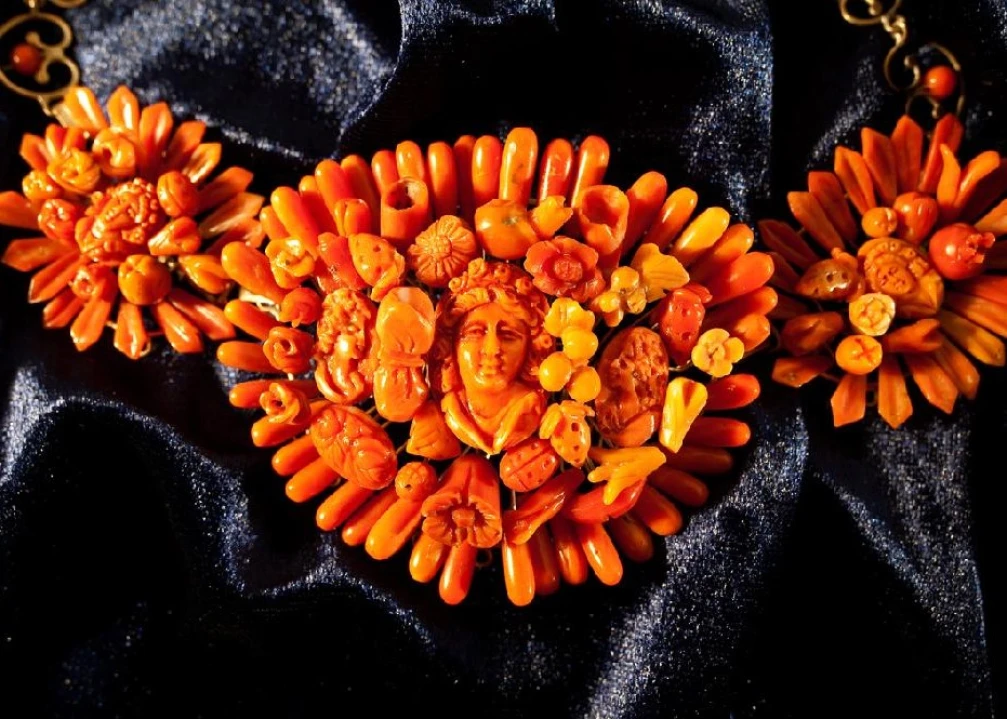In ancient times coral finds its popularity as an amulet, as evidenced especially by the classic "cornetto", Italian for "little horn" or "hornlet", an amulet worn to protect against the evil eye. It was believed also to have beneficial effects on female fertility and to protect children from harm. Widespread belief among the Romans, who used to put a sprig around the neck of their children.
But beyond any questionable property or attribution, it is as prestigious ornament that coral finds its affirmation. The processing of coral was mainly carried out by Jews from the fifteenth century onwards. There were around 50 coral workers, who were first organised in a consulate and later in a workforce in 1555.
The oldest assets of the workforce between 1628-1633 included both simple master coral workers and coral sculptors. After the eruption of Baroque, the technical possibilities and consolidated experience of the artists altered: the types and subjects of the works changed, as well as the techniques and materials used.
The polymeric fashion leads to the creation of complex and articulated compositions that combine coral precious materials creating works of decorative exuberance, flamboyant, highly refined, and original.
Today the Trapani method of working with coral is evident in the creation of high-quality compositions. Coral work involves various delicate stages, which are closely linked to the ancient craft tradition: washing, cleaning, cutting, drilling, removal of spines, polishing, engraving and setting.
Even today, the uses of coral are kept alive in Trapani by a small number of consummate artisans, whose studios and shops can be seen as contemporary cabinets of wonder.
The art of the masters of Trapani is not closed, but rather is attentive to the culture that originates from multiple places and touches not only Trapani, but also the rest of the island. The coral workers also often collaborate with bronze workers, goldsmiths and silversmiths, exchanging their experiences.
By Camera di Commercio di Trapani with Unioncamere




